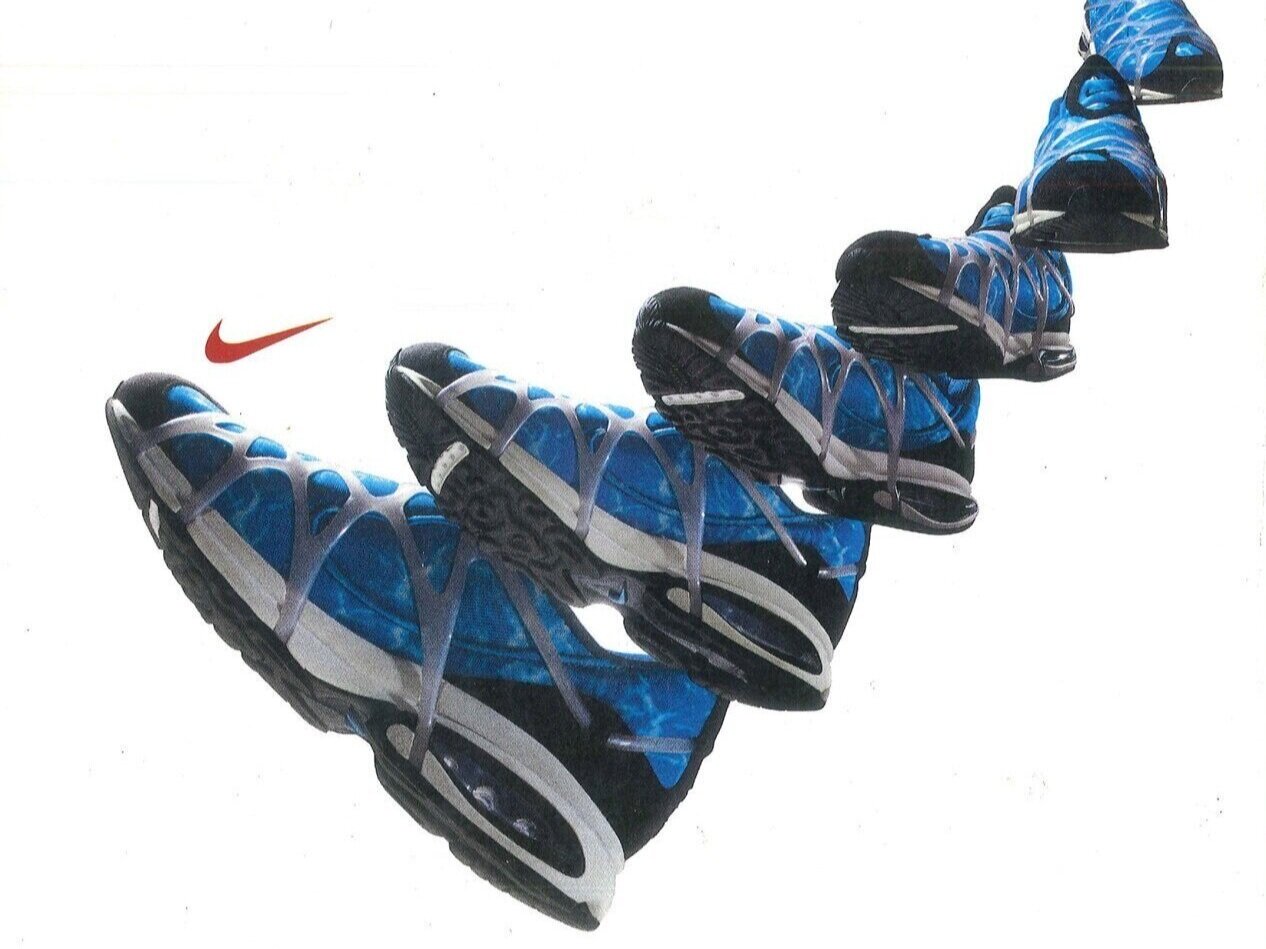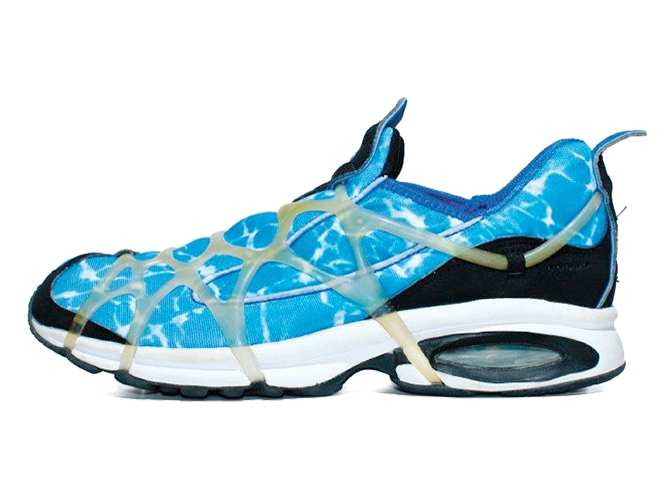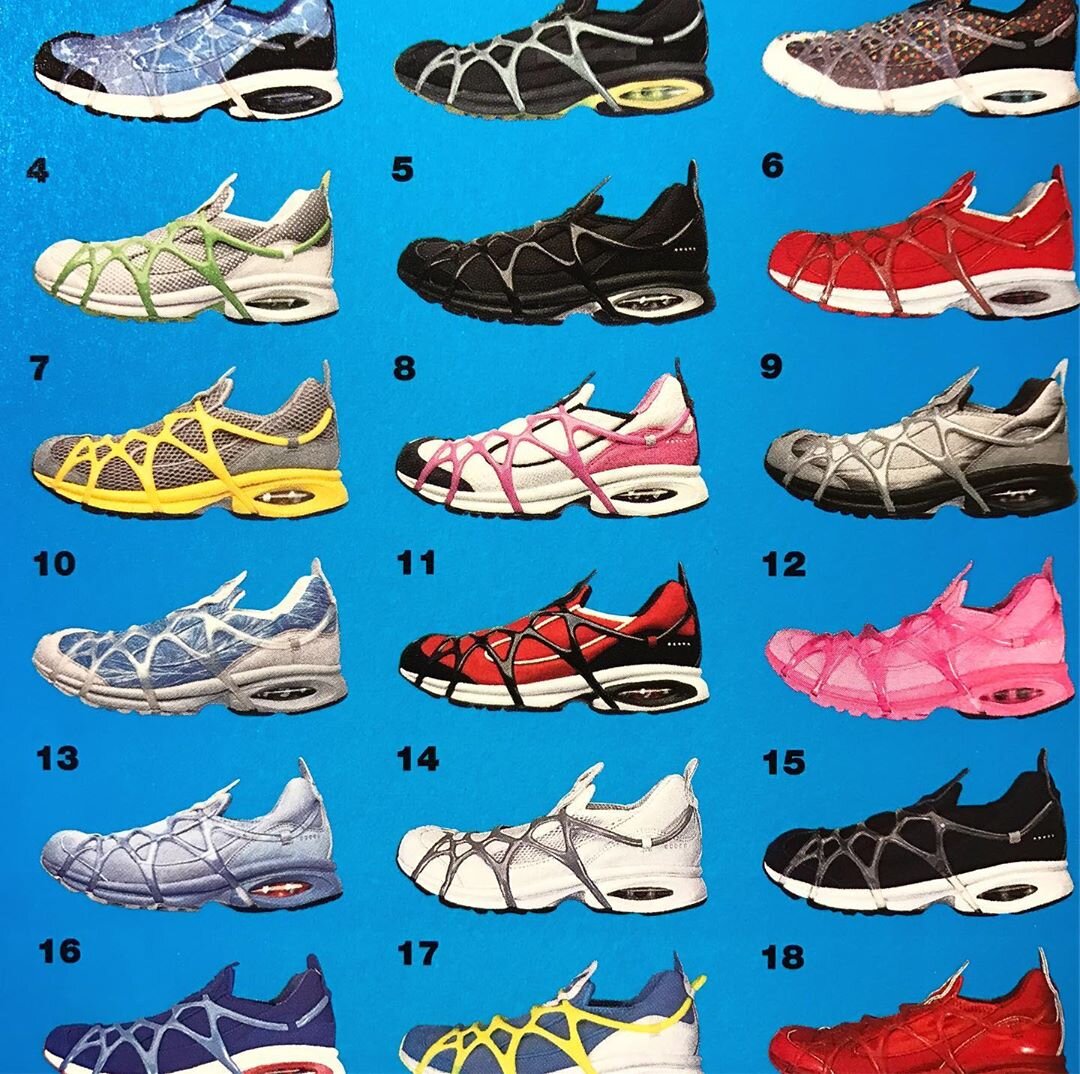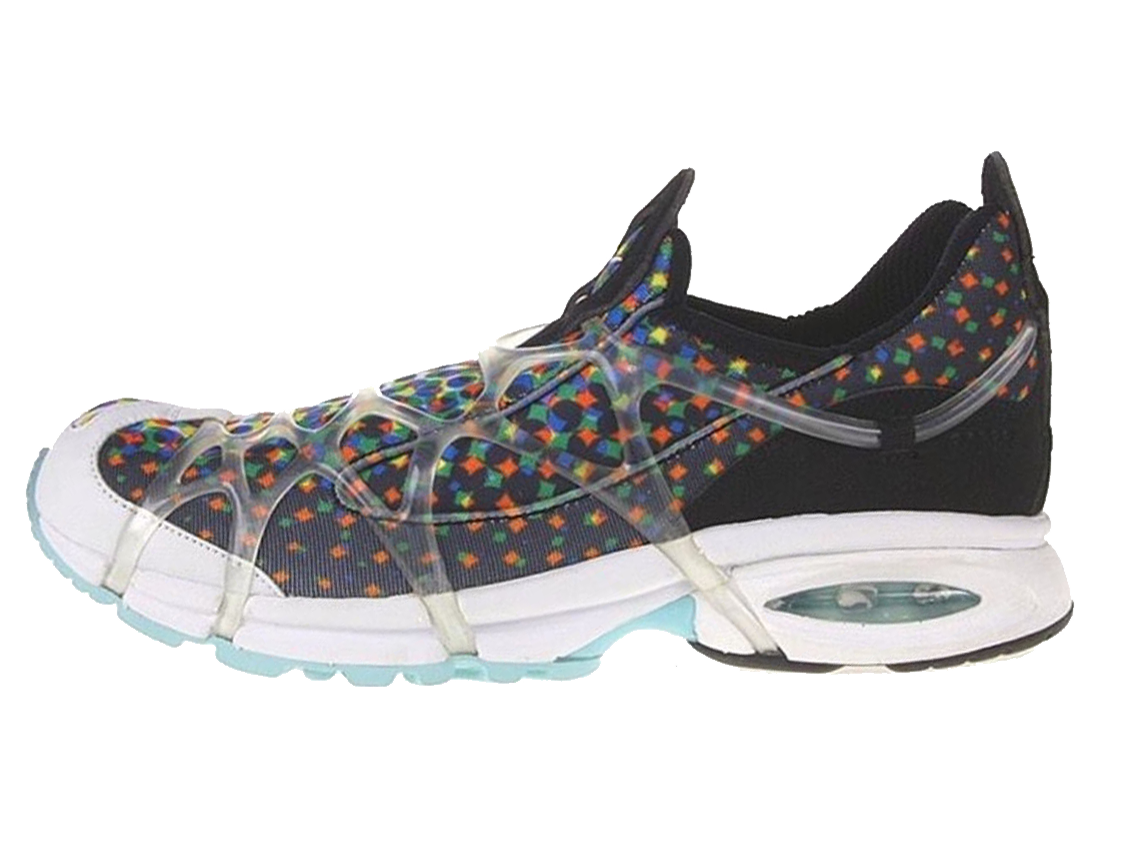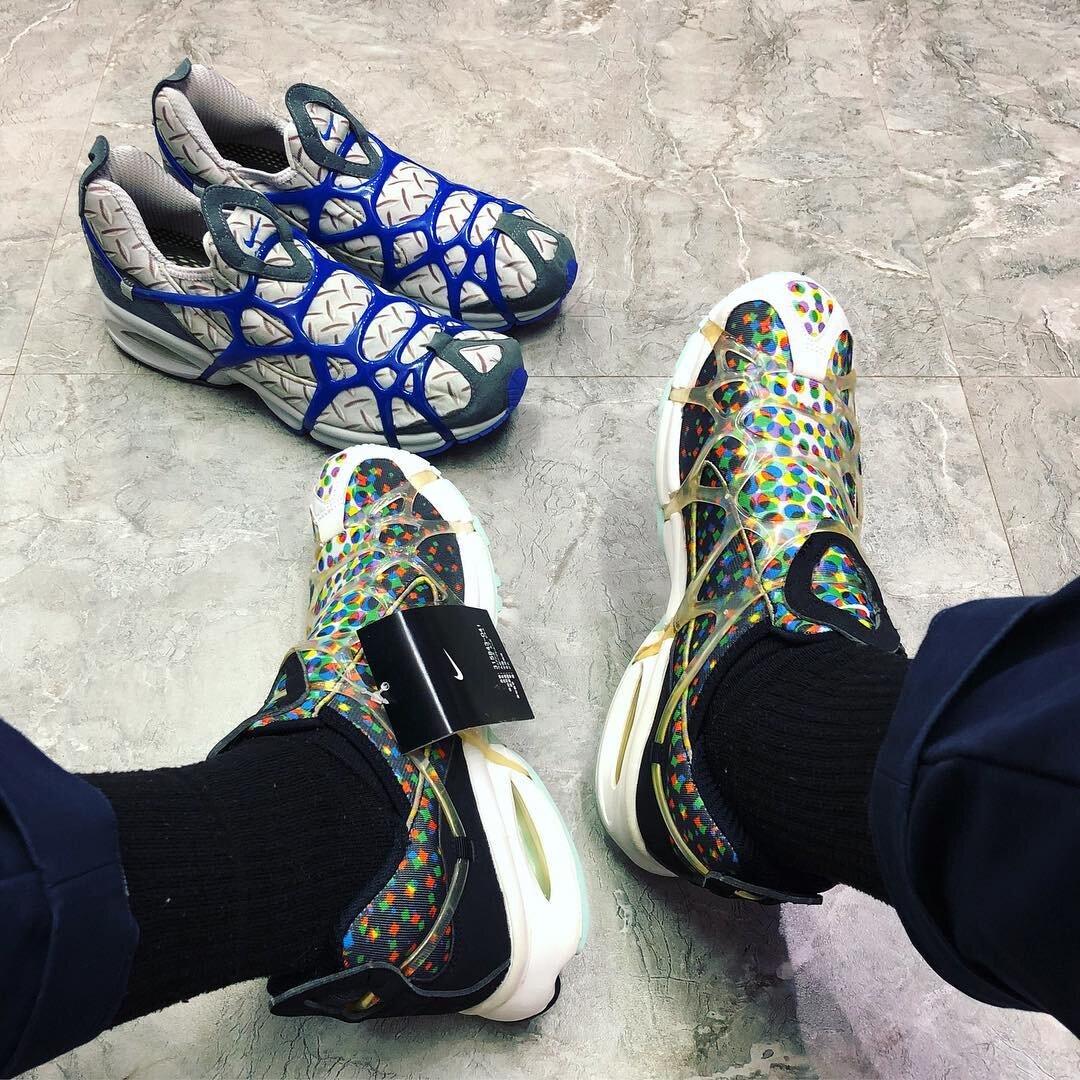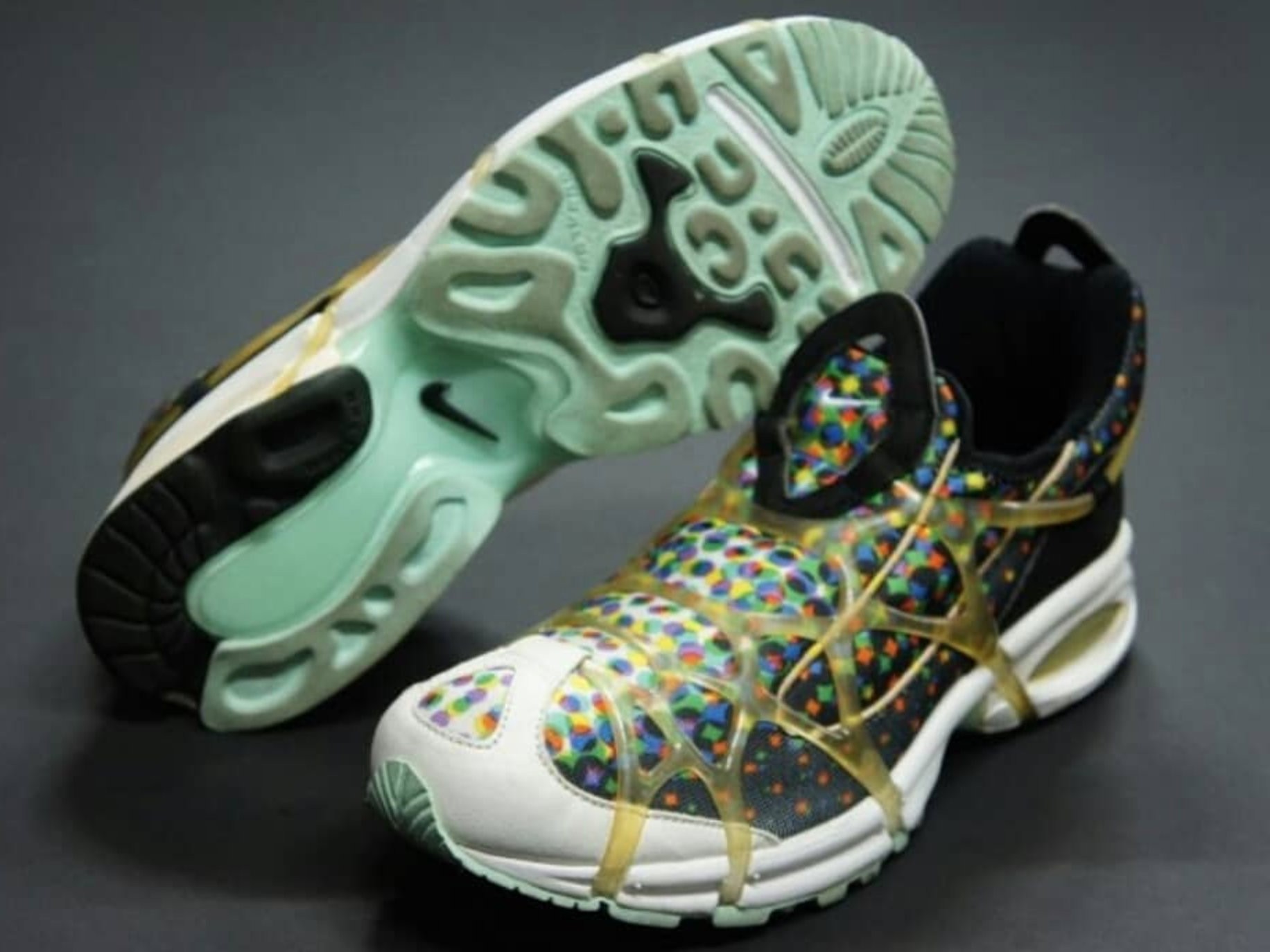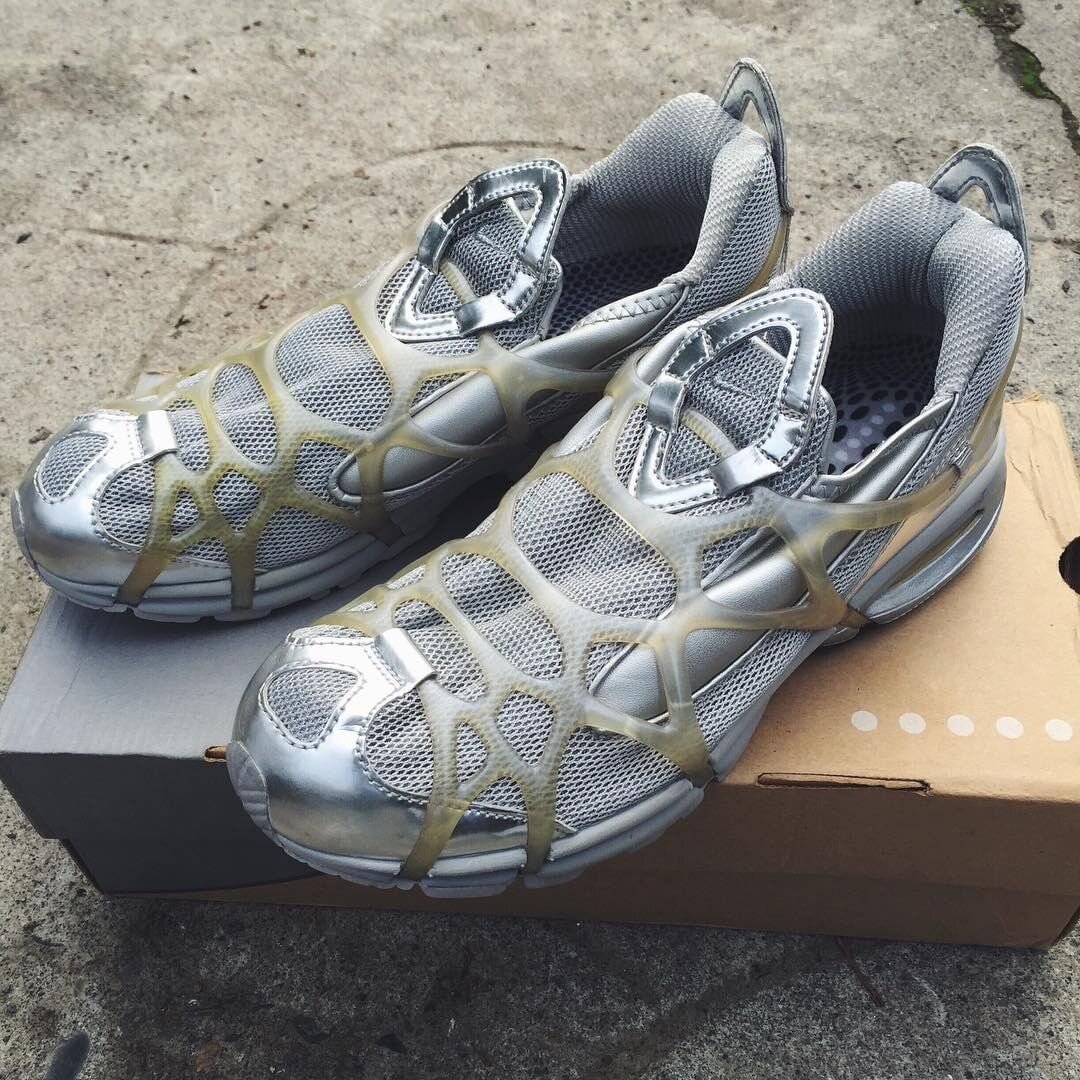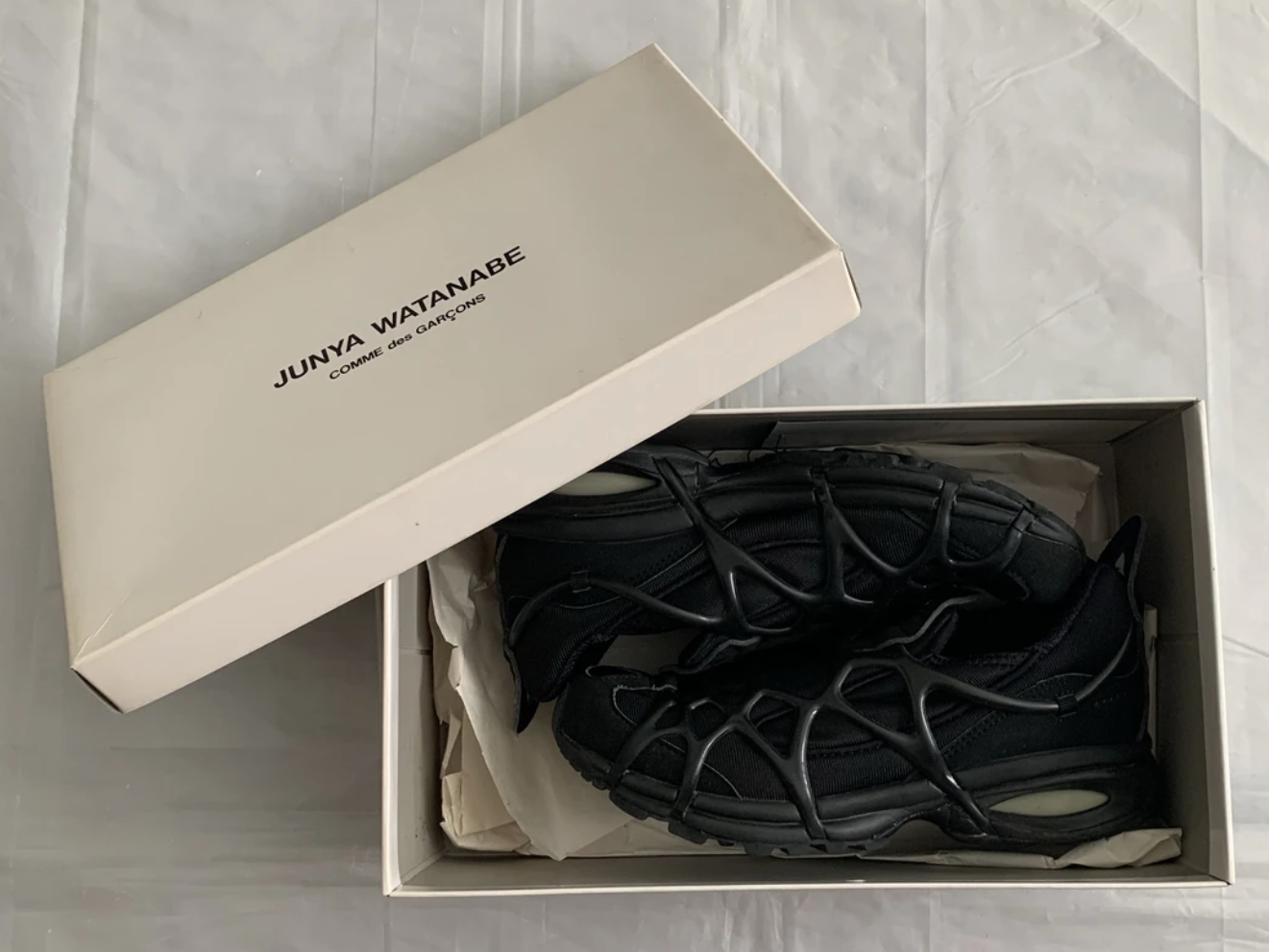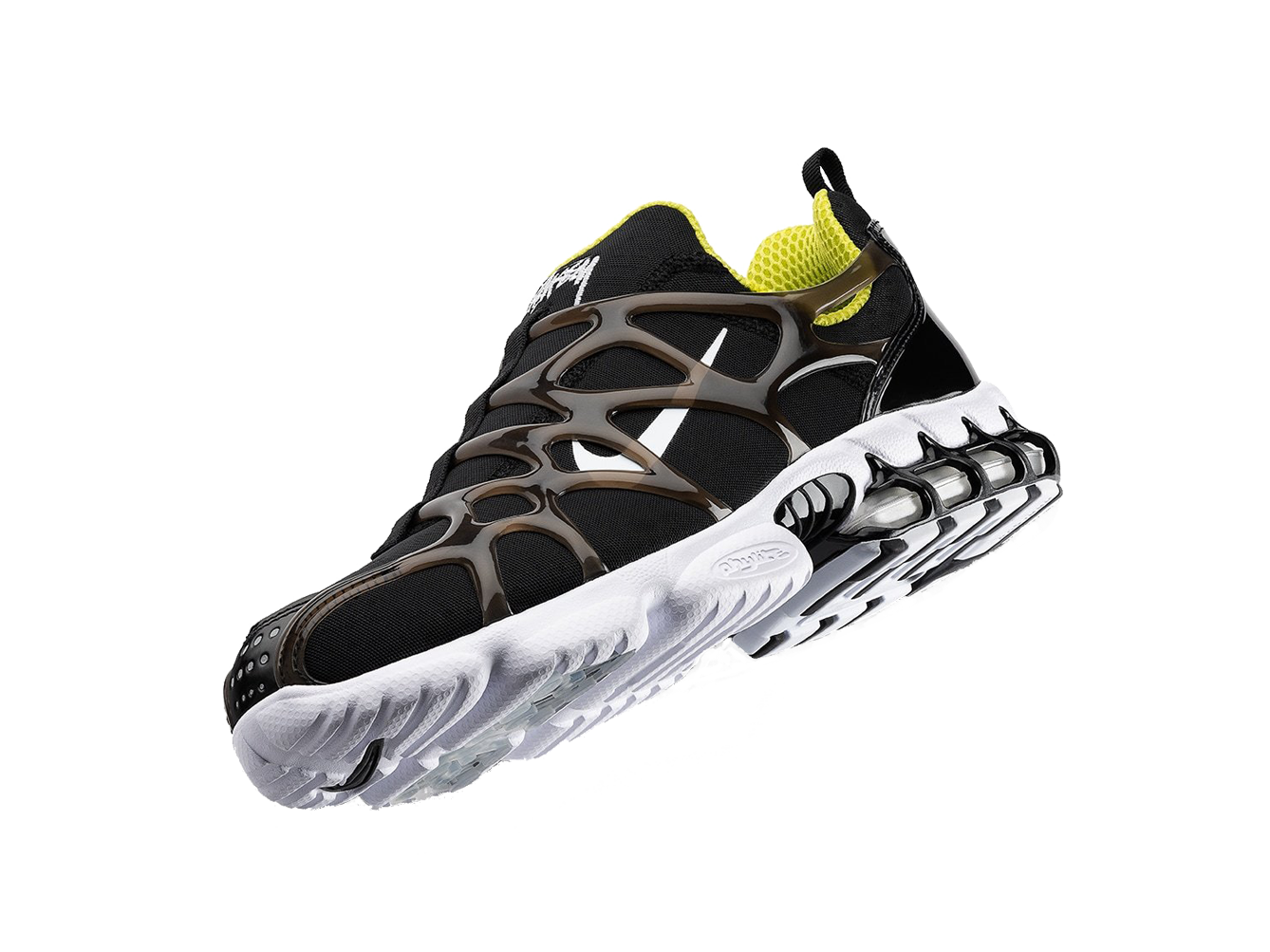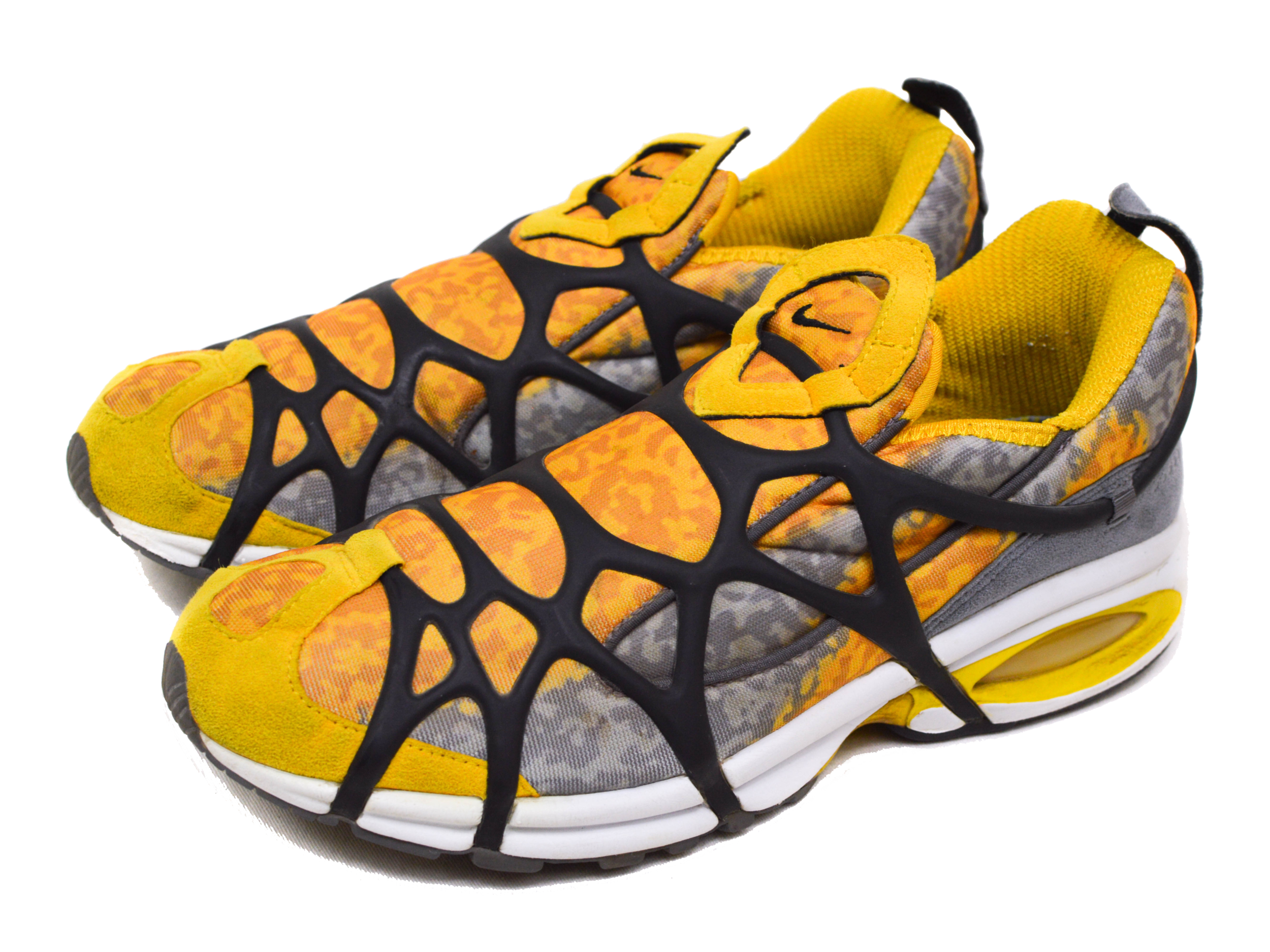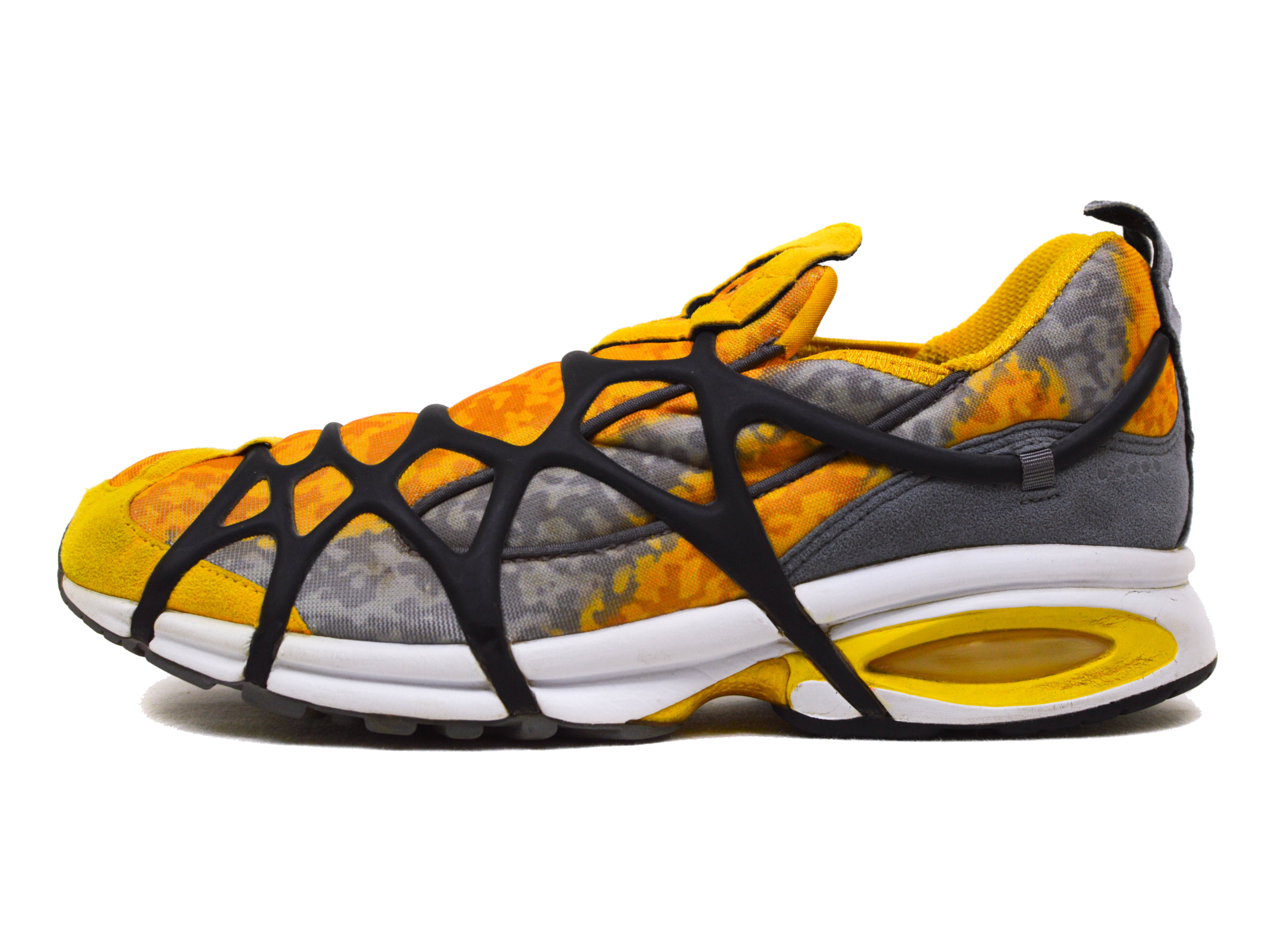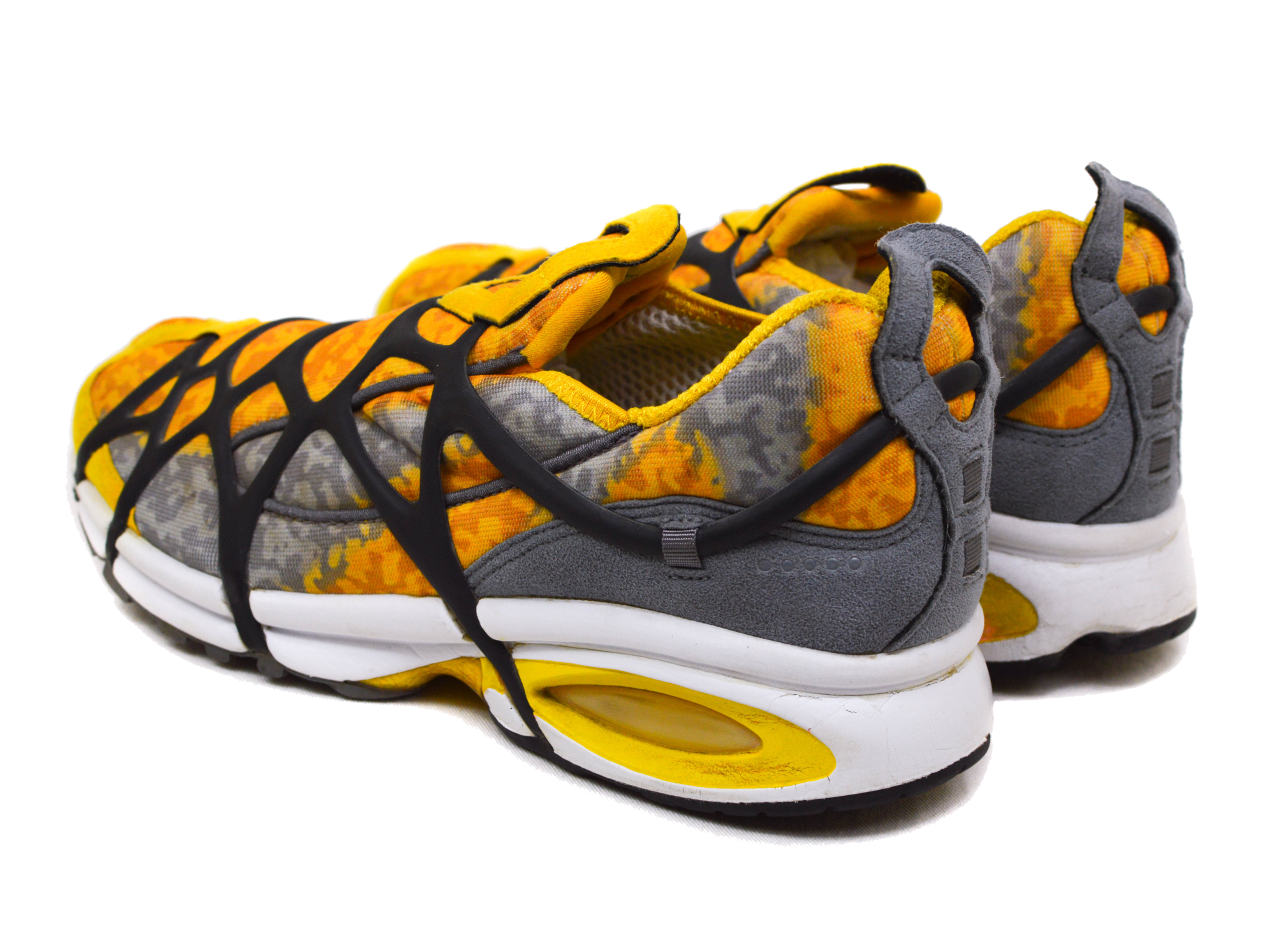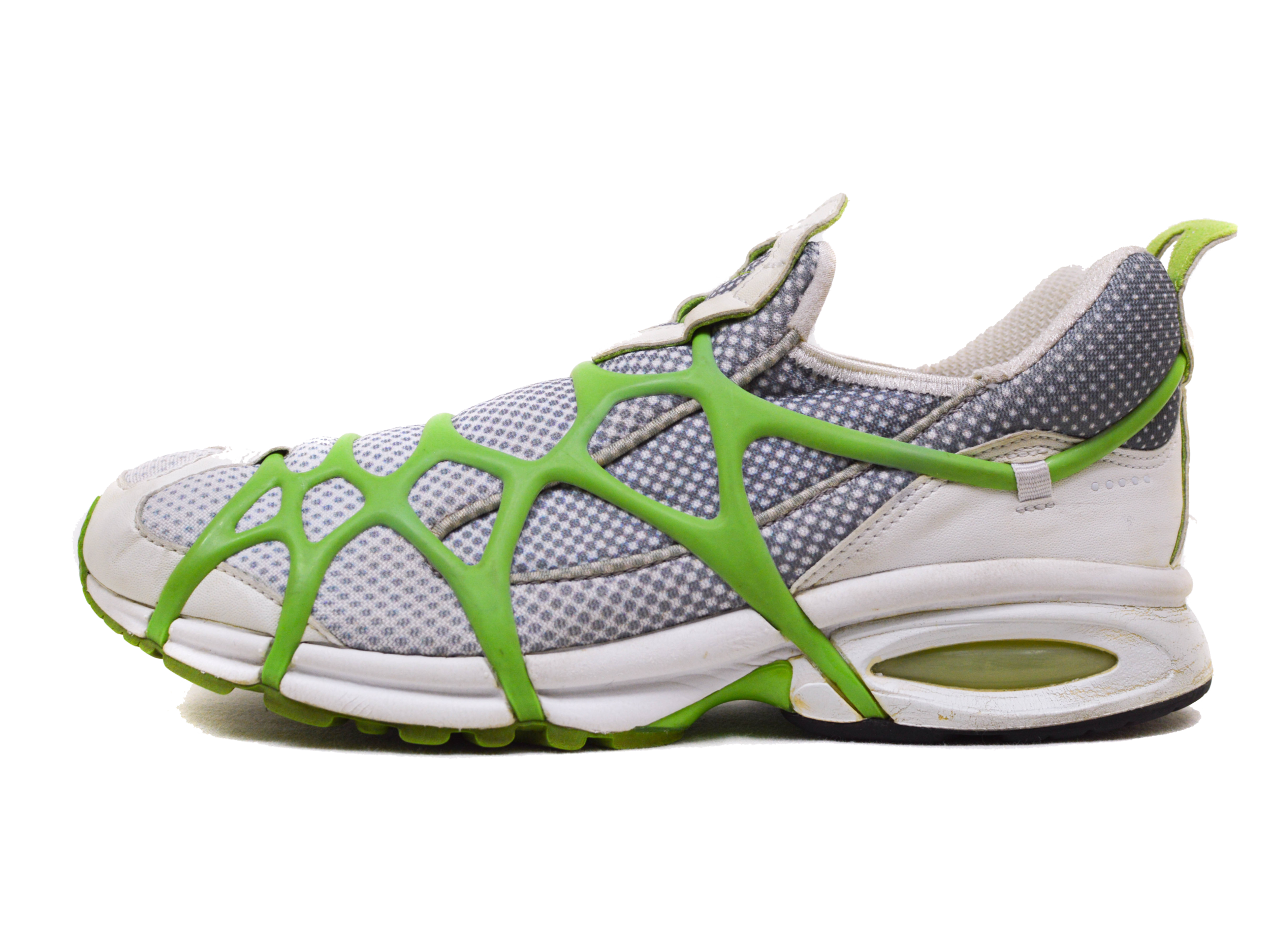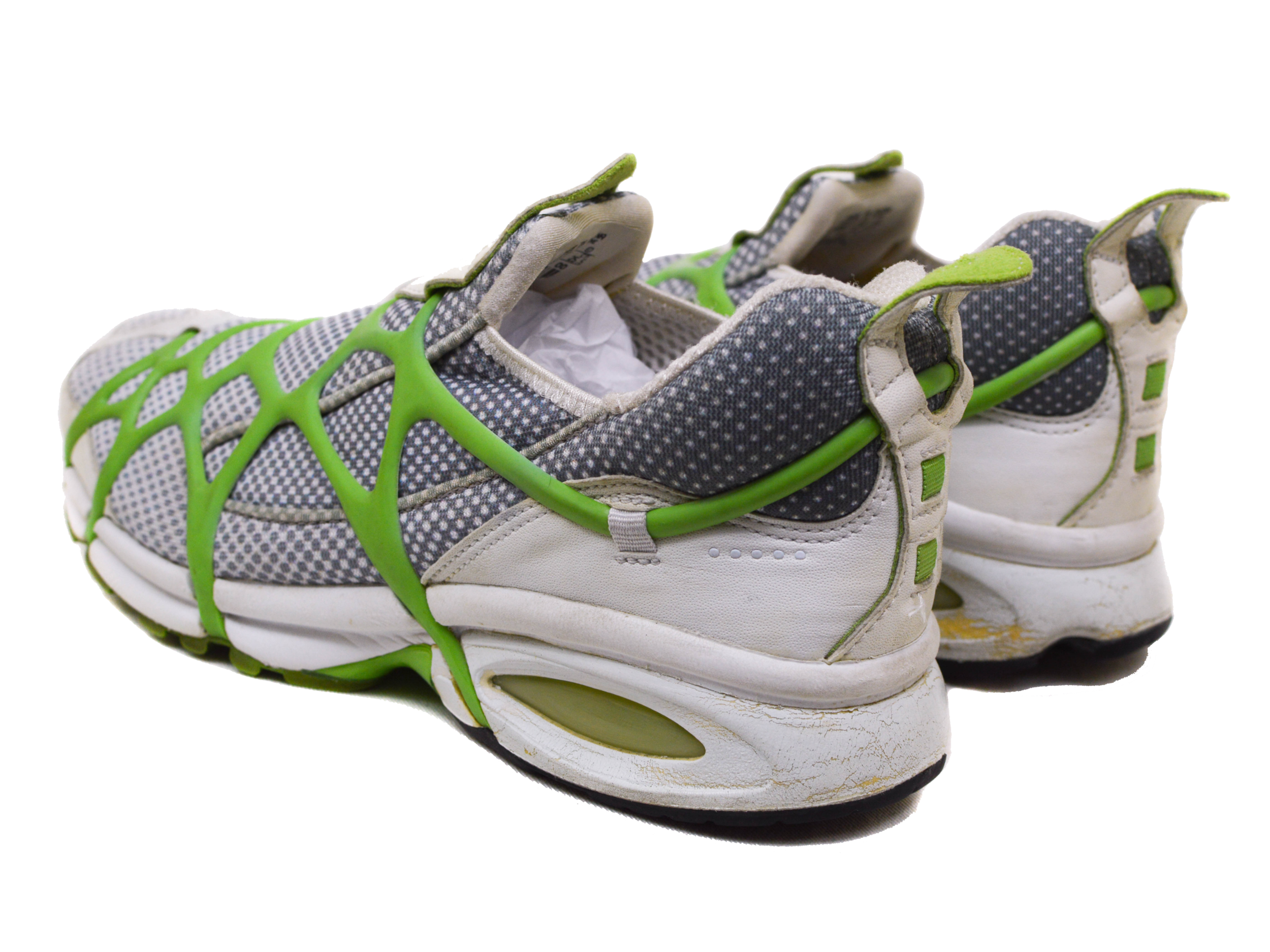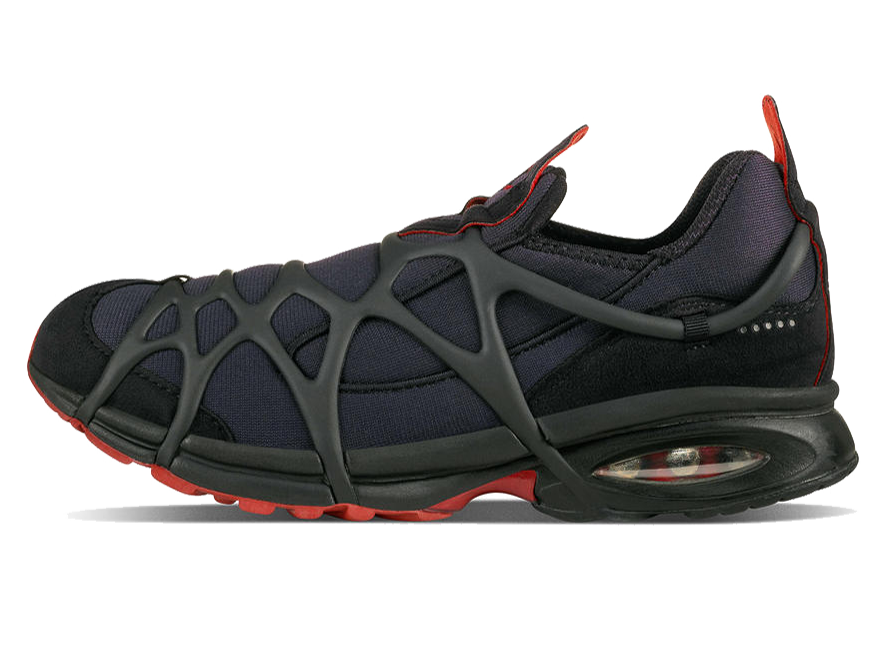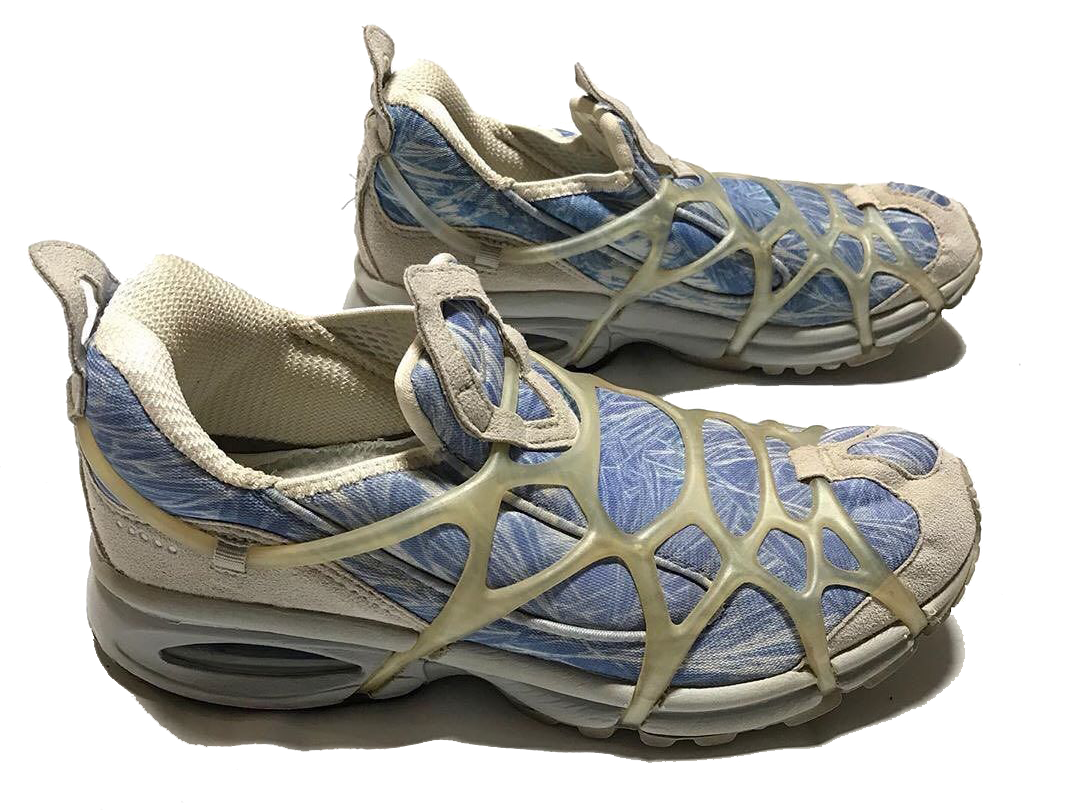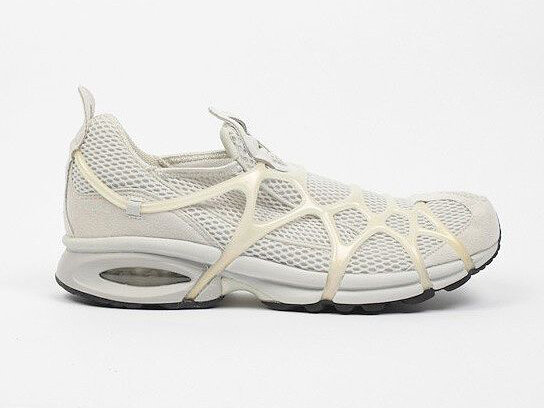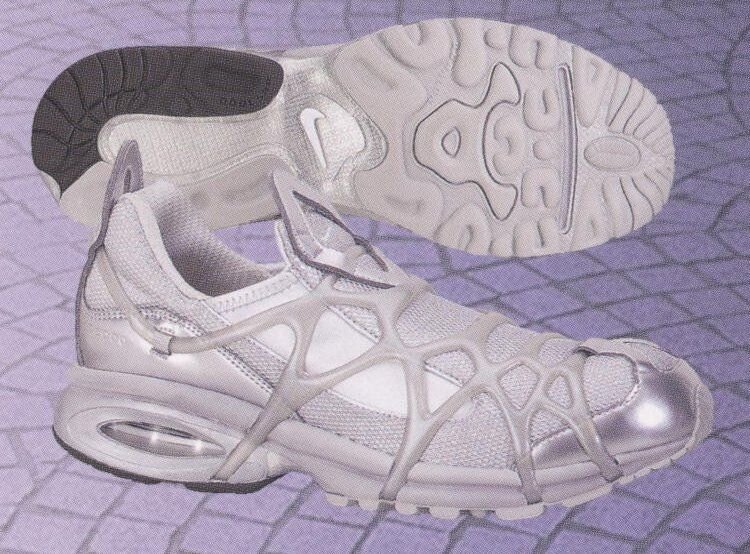Run It Back
Even though it is two decades old at this point, I would argue that the Nike Air Kukini still is more “boundary-pushing” and “disrupting” than many contemporary sneaker designs that boast those mostly hollow catchphrases. Except for the use of excessive plastic TPU (Thermo Polyurethane) webbing maybe. Gary Warnett once dubbed them as “ugly but good” and I could not agree more. In terms of straying away from simple and classic silhouettes it wipes the floor with all the forced deconstructed or overconstructed designs out there like contemporary atrocities such as the Balenciaga Triple S. Of course, sneaker design needs to experiment with new things and continue on a steady trajectory framed by technological innovation. And like anybody else, normally I would pass over “they need to bring those back” outcries. Nonetheless, in this case, I have to join in the “Where’s my Kukini” chants. I would love to be able to get a pair of the original “water” colorway or 2007’s CMYK-dots version which was a women’s exclusive at the time I believe. Instead, Nike released decent Black/Resin Grey-Yellow and White/Vibrant Blue colorways in 2011 and shortly after put the Kukini Upper on a Free 5.0 sole unit in a failed mashup. Recently, Stüssy served another hybrid silhouette including Kukini elements. The Nike Air Zoom Kukini Spiridon Cage 2 is quite solid and hopefully might indicate some plans to re-introduce the model.
Some Japanese collectors may have storage units full of pristine pairs of various colorways and co.jp exclusives. Still, they might be unwearable because the air bubbles in the soles of original pairs from 2000 don’t hold up too well after two decades. Today, memories about the Kukini are mostly shaped by collaborations with Coca-Cola and Junya Watanabe. Nike could re-introduce the silhouette with as many redundant collaborations as they want, I don’t care as long as the original “water” colorway is part of the lineup. Even though I have to admit, I might get excited for Kukinis by atmos, COMME des Garcons, or UNDERCOVER of course. Like mentioned before, the silhouette was pretty popular in Japan and it would be nice to see that acknowledged in the release rollout whenever they might come back.
Nike Alpha Project Ad.
Source: Instagram
Originally released in 2000, the Nike Air Kukini was another bold and laceless running shoe concept right after the Nike Air Zoom Seismic. Both models were part of Nike’s short-lived and (over-)ambitious Alpha Project. Nike launched it on New Year's Day 1999 intending to identify and solve product performance problems in collaboration with their superstar athlete roster. To properly brand the new product line, the design team around Nike’s Olympic creative director Ken Black was asked to create a subtle logo that would complement the Swoosh while not detracting from it. The result was a very minimal and IFYKYK logo comprised of five dots. “Alpha' provided a context for us,” remembers Black. “Five letters indicating five steps we take to ideate, create, test, and prove these products — starting with the first one, alpha, which is always talking to athletes. This provided a narrative to guide more development and conversations connected to these products. It also gave us the simple direction for our primary mark, which was simply five dots.” In case you ever wondered, what the dots on the heel of your Nike Prestos mean, there you have it. According to Alpha Project global creative director Michael Morrow, Alpha Project “was meant to be a long-term initiative to focus on the most relevant innovations in product per category. This would not necessarily mean the most expensive product, but the most exciting product from an innovative and commercial opportunity [standpoint]. We were looking for new 'juice' in the brand in each category, and these needed to be products that were attainable from a price-point perspective because we were putting a lot of marketing dollars behind Alpha.”
Nike Kukini 2003 ad.
Source: One Club
In the case of the Air Kukini, Designer Sean McDowell was inspired by a distinct sponsor logo in the shape of a spider on a suit of alpine ski racer Picabo Street and decided to create a shoe out of a spider web. He constructed a rubberized lattice as an alternative to laces for keeping the foot in place and continued to build from there. During the R&D phase, McDowell worked closely with triathlete Mark Allen whose insights suggested adding a ventilating sole construction. Triathletes and other runners pour cups of water on their heads to cool off and Allen complained that the water would run down his legs and pool in his shoes. The solution to the problem was perforating the sole unit to drain the water. If you want even more comprehensive information about the Air Kukini design, I’ll leave you with Sean McDowell’s detailed story recalling its development process below:
“The Kukini started with Picabo Street. She was qualifying for the Winter Games and she was sponsored by a company that had a huge spider web on the side and seeing it on my television screen you could see it from miles away. It was the boldest, incredibly interesting thing, so I wondered if you build a shoe out of a spider web. I started putting it on the sides of shoes with a web here and there plus a normal lacing system. Then I decided to pull that out and start making the web a stretchy material then connect them and tape the web to the top of the shoe and have the circles coming out from the center. We tested it and you have a lot of protruding bones at the top of the foot so it becomes really irritating. At the same time, we started to get a lot of briefs on how we’d bring the shoe to market and triathlon was starting to become really popular. We had just signed the Iron Man triathlete Mark Allen and we thought it would be a good shoe for him. I took the early prototypes and flew down to Texas and met with him, talked through the project. He told me, “Well, I kind of think of myself as an amphibian — I’m in and out of the water.” I thought that was great and so I went and did all of this research on amphibians and changed the pattern completely, working with the NSRL (Nike Sport Research Lab) to change the pattern completely and map pressure points and we wound up spacing out those bars to distribute that pressure and still support — wrapping around the tooling. The original had tons of holes in the bottom — tons. One of the big insights from Mark was that he would pour cups of water over his head and it would run down his body and pool in his shoes, so we put holes in there so the water would drain out. Then we had a long discussion about how we would build the midsole for him. He’s running after about six and a half hours of competing, in the water, on the bike, and into the run. We looked at his biomechanics and he started getting pretty sloppy — anyone would, right? You’re running a marathon after five hours of competing! So he’s tired and he’s starting to break down, so we switched to a polyurethane heel which is a much more stable heel system and we added the Max Air in the heel which is a good long-term cushioning system for him. We kept Phylon in the forefoot and we made the whole outsole Duralon so you get blown rubber that’s very, very soft for a comfortable sole. On the first versions, the spiderweb came over the outsole and there was a small adjustment system so you could micro-adjust the forefoot, the midfoot, and the heel. There are several prototypes there and that was on the first one — the little tabs were flies! They had little wings and little heads and you’d peg them. It became very stiff, very heavy and totally didn’t work and so we stripped the whole thing out, redesigned it, and went over the midsole instead.”
- Sean McDowell on designing the Nike Air Kukini (Source: Gwarizm)
Sources:
Gwarizm
Inventory
Highsnobiety
Thumbnail image: Nike Air Kukini Ad
Source: askiparait


